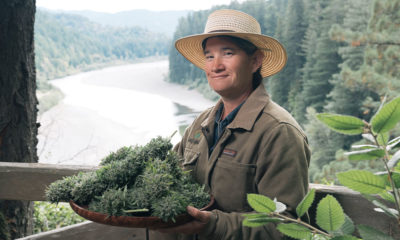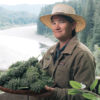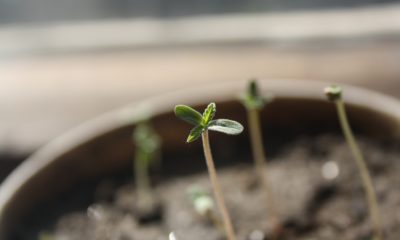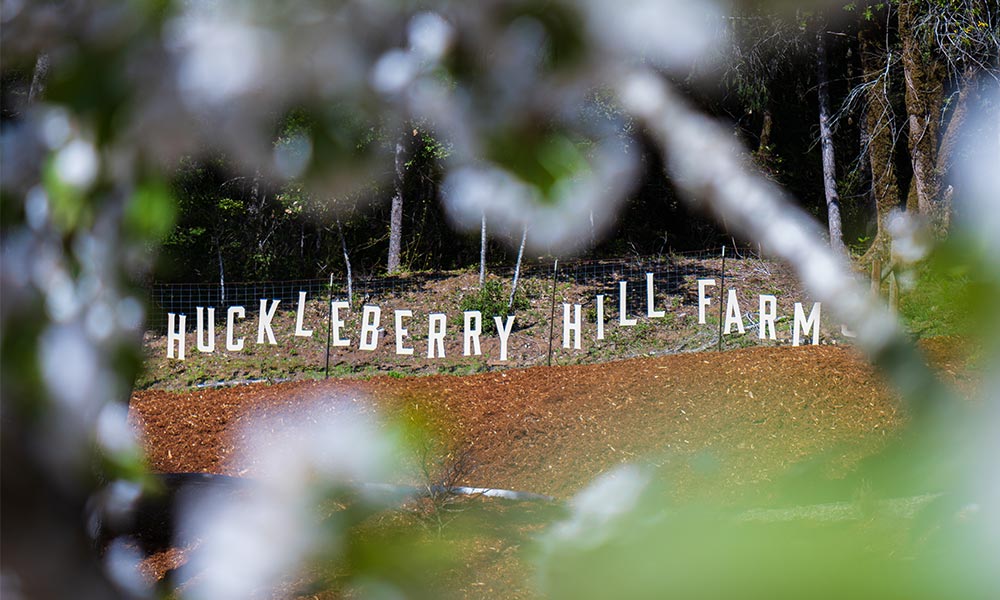
Cultivation
Face of the Farmer: John Casali, Huckleberry Hill Farms
A second-generation heritage farmer in Southern Humboldt County shares his story, from farming with his mom, to imprisonment, to building a successful brand.
In the mid 1970s, by the time John Casali was five years old, his mother, Marlene Farrell, had relocated them from his birthplace of San Francisco to a farm in Southern Humboldt County.
Starting in 1967, more than 100,000 people gathered in San Francisco’s Golden Gate Park and Haight-Ashbury district, where mostly young people identifying as hippies engaged in drugs, free love and anti-war activism. Deemed “The Summer of Love,” the social phenomenon offered the world a window into America’s growing counterculture.
When the festivities ended in 1969, many traveled north to live off the land. Dubbed “Back to the Landers,” they settled mainly in three regions in Northern California: Mendocino, Humboldt and Trinity counties, which all make up the Emerald Triangle. The area is known for its legacy farms that started the cannabis industry. That includes Casali who is still homesteading his mother’s property, Huckleberry Hill Farms, 50 years later.
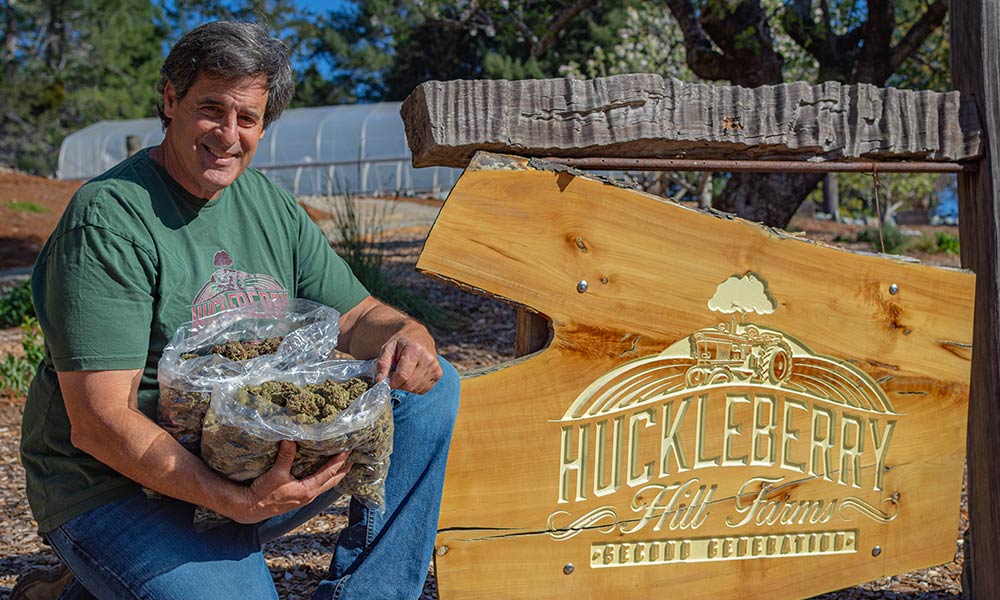
At Huckleberry Hill Farms, Casali’s mother grew their own food. She planted fruit trees and grape arbors that still produce today, alongside flower gardens woven throughout the idyllic hillside property. The garden isfilled with the history of the cannabis cultivars they’ve painstakingly produced over the years, in memory of loved ones now passed.
Casali’s earliest memories are of those following his mother around the garden. “Cannabis was always part of our life from the very beginning, but it wasn’t the only crop on the farm,” Casali says. “I can remember running around with my mother as early as 10 years old, helping her cultivate the plant, but also tending to a grape arbor, fruit trees and the vegetable garden we ate from. Cannabis was just another crop that allowed us to survive and thrive in the country.”
Growing their own food, fishing commercially and logging and/or chopping firewood for others are just a few ways those living a rural life survived on the north coast of California and Oregon. Cannabis was grown on the side as a subsidy. Many produce farmers also grew cannabis in a don’t ask, don’t tell scenario that served them well for years. That is, until the helicopters came.
CAMP California
The Campaign Against Marijuana Planting, otherwise known as CAMP (1983 – 2012; 2015 – present) is a multi-agency law enforcement task force under the jurisdiction of the California Department of Justice that coordinates local, state and federal agencies, including Army soldiers and National Guardsmen, with a common goal of eradicating unlicensed cannabis cultivation and distribution in the state.
What CAMP did was federally fund, or subsidize, a bevy of local law enforcement for the failed War on Drugs. Just as with the failed DARE program taught in schools by paying police officers to teach kids about drugs, CAMP created a cash flow to otherwise lowly paid law enforcement, causing them to become dependent, and subsequently support, the failed War on Drugs at the polls. This only perpetuated the ignorance surrounding cannabis, a benign and beneficial plant.
No matter that California legalized medical cannabis in 1996, and had permitted adult-use since 2016. City, county and state agencies were guaranteed an income for raiding local, legal medical farms and associated entities for years under federal prohibition of the plant. With the combined funding, CAMP utilized helicopters in its multi-agency task force, forcing the plant–meant to grow outside in the sun–inside.
This changed the face of cannabis farming for decades–if not forever.
The Raid
When he was 15 years old, Casali begged his mom to start his own farm. Not young enough to purchase an 11-acre parcel on his own, she co-signed, and he provided the down payment for a sweet spot along the Eel River in Southern Humboldt.
“Mom and I would compete for the best crop,” Casali says with a smile. “But then CAMP started in the ’80s, and by the early ’90s, my parents decided that fishing would be safer, so they left me to take care of the family farm.”
CAMP helicopters forced farmers to grow under trees and often underground in shipping containers to hide. The plant that once provided five or ten pounds at full growth out in the sun now produced substantially less in its hidden, stunted capacity.
But hiding wasn’t enough, and one morning just after sunrise, 30 federal agents arrived at the farm. They never handcuffed the farmer or his friend and neighbor Todd Wick who were both 24 years old at the time. Rather, they handed Casali a little yellow speeding ticket, saying they’d be back if they needed to talk to him further. Fourteen months later, they returned, offering up a hefty $275,000 bail for Casali.
“My mom put up the house and everything else she owned to get me out of jail,” Casali says. “For the next three years, Todd and I drove from Southern Humboldt to the federal courthouse in San Francisco to fight for our freedom as cannabis farmers—as good people, never wanting to hurt anyone.”
Some 100 supporters from Humboldt arrived for the sentencing that included mandatory minimums of ten years, all the way up to life. Casali and Wick surrendered in the summer of 1996, just a few months before California would vote to legalize medical cannabis in the state—the first to do so in the country.
“There was no appeal process based on the new medical laws,” he says. “Because we had no more money left to fight for both appeals, Todd went through the process and lost. After that, we were resigned to be in the system until we served our time.”
Farming In Prison

Because Casali and Wick were farmers, licensed and able to operate heavy equipment, much of their time served was spent working agricultural crops associated with the US Penitentiary at Lompoc, at around 12 cents an hour.
A little-known element of the failed privatized prison system is its eventual transferring of jobs that used to be done by private citizens. Not all jobs in America went overseas during the 1980s. Everything from manufacturing foodstuffs to shower doors to the 411 information line went to prisoners for pennies an hour—a travesty not often discussed in the politicking of job gains and losses in the US.
Since the Lompoc prison camp didn’t have a residential drug program, Casali was transferred to Nellis Airforce Base, where he said he actually learned something about drugs and addicts.
“While the program didn’t apply to me and my cannabis use or farming of it, I learned a lot about true addicts out there, and how they really lose their ability to control what they consume and how much,” he says. “Personally, I don’t believe cannabis falls into that category at all.”
Casali added that, ironically, the prison system is loaded with offerings of any drug desired, and it’s up to the prisoner to abstain or face consequences of a higher security stay with less privileges.
After serving eight of the ten-year sentence for good behavior, Casali was released to a half-way house in the Tenderloin, San Francisco’s notorious (and worst) neighborhood. He then came back home to Humboldt and began farming his beloved cannabis once more, under California’s newly established cooperative medical cannabis compassionate care program.
“I had 50 people here in this community waiting to help me get my life back in order,” Casali said. “Everyone here knows it could have happened to anyone.”
Call it a barn raising at its finest, the struggle’s nothing new to cannabis farmers across the country in newly legalized states. They support each other while fighting issues of inequality, exorbitantly high taxes and ridiculous ordinances at every turn.
These farmers struggle through the same challenges as our food farmers—drought, storms, frost, low prices at market. But they’re also confronted with the failed War on Drugs, brutal governmental raids, prison time and subsequent criminality upon re-entering society.
The only difference between cannabis farmers and food farmers is that there aren’t any government subsidies for a low return in the ever evolving multi-billion-dollar cannabis market. There’s no category for small, craft cannabis farmers that would help them compete with large-scale corporate operations that sprung up across the state after legalization in 2016.
Price Per Pound

In the old legal medical market of California, the price per pound could fetch somewhere between $3,000 and $4,000. In California’s regulated recreational market, the farmers were promised up to $1,200 per pound, per contract. But in the final analysis of bringing it to market, farmers were offered a take-it-or-leave-it deal of just $400 a pound, contract or not. How did this happen?
“It costs me close to $500 to grow one pound,” Casali says. “To give you an example of a neighboring ag situation, Napa Valley grape growers are taxed $15 per acre and cannabis farmers are taxed between $4,200 to $5,000 per acre. That’s $1 per square foot; making cannabis the highest taxed agricultural crop in the world.”
Add $161.28 California State tax per pound, then $150 or so per pound to trim, plus Water Board, Fish & Game fees and untold thousands of additional dollars for improvements made for most farmers to come into compliance. Anyone can see that, on paper, this is the beginning of the collapse of the historic, heritage small cannabis farmers.
“We’re predicting that by the next season, we’ll lose 50% of our small farmers up here,” Casali says.
To provide a better overall idea about what California’s cannabis industry to the north has been through since the legalization of adult-use began, the County of Humboldt estimated that there were 15,000 small cannabis farmers operating when legalization went on the ballot with Prop. 64 in November of 2016—with no issues of meeting supply and demand, and nary a pound left on any shelf.
Today, there are currently 400 permit holders in Humboldt County alone, with Casali predicting 200 will have to stop farming in the next year, unable to afford to farm in a legal market.
“When we lost the one-acre rule the night before legalization, that put a nail in the coffin of most of our small farmers,” Casali says. “The corporate farms, or those with the most financial backing, began buying up the smaller farm’s licenses, beginning what’s called ‘stacking licenses.’ One large-scale, well-funded farm nearby has maybe 20 licenses stacked right now.”
The one-acre rule was supposed to be the saving grace for the small farmer. The way it was taken away the night before legalization with lobbyists in a secret, closed-door meeting with California Gov. Gavin Newsom left many appalled. Many people called it a “good-old boys club” of wealthy California cannabis entities looking to operate beyond promised limits.
Cooperative umbrellas were another way the small farmer hoped to survive, but with a $400 per pound reimbursement, even those entities fell short at market.
Finger pointing aside, one issue slightly overlooked is the lack of safe access or retail space available for moving plant material from the farm. With a national insistence that the plant is not beneficial, many conservative cities and counties have banned cannabis access points.
Growing A Mother’s Love
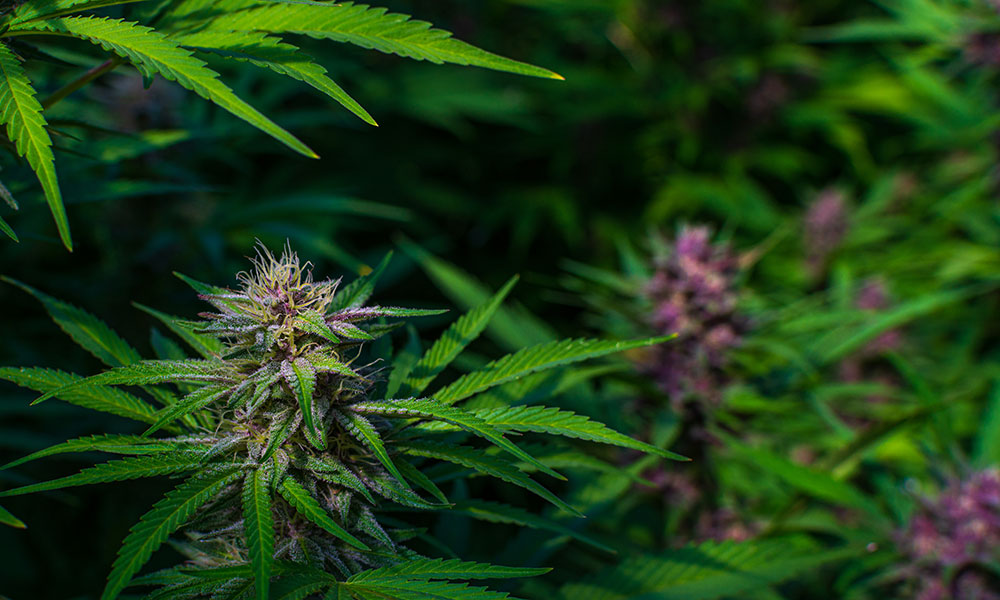
Casalis’ partner, Rose Moberly, joined him three years ago, relocating from her home state of Colorado, where she too learned to farm cannabis at an early age. “We both went to community college but gravitated back to our true passion, farming the plant,” Moberly says.
Sadly, Casali’s mother passed away while he was serving time. One year to the day of his imprisonment, she died of a heart attack while pulling canned goods from a freezer; she had planned on bringing them to Casalion her next visit to see him in prison.
“My mother taught me everything I know about farming,” Casali says. “This farm is her legacy, and I just had to find a way to honor her. So, we created a new cultivar from a favorite strain she created, Paradise Punch, by crossing it with both Blueberry Kush and Lavender Kush, to make Mom’s Weed.”
When Moberly became part of his life on the farm, Casali said it could no longer be just about him.
“Rose’s mom, Margie Zietz, battled cancer and passed away in 2020,” he says. “We took Paradise Punch and crossed it with Rose’s mom’s favorite strain, Wishful Thinking, creating Margie’s Magic.”
For the small cannabis farmer still standing, many feel that branding is the key to success in the new market. Personalized cultivars grown in the sun for years in loamy redwood soil can’t be compared to indoor, large-scale operations. Promoting this difference is critical, and branding Huckleberry Farms “Mom” cultivars has been key in getting their flower to market.
Crystal Clear

Aside from the hard work and red tape that comes with being cannabis farmers, there are perks and magic to be found in the hills of the Emerald Triangle, with Casali and Moberly offering up wishes to special visitors via crystals.
“We had a load of rocks delivered from the local quarry and noticed some of the rocks smashed were hollow and full of crystals,” Casali says. “So, we began putting them aside and saving them for guests to open up.”
Everything about Huckleberry Hill Farms feels sentimental. The crystals, the mother plants, the fruit trees and grape arbors. The general layout of this small, less-than-an-acre farm has been landscaped with love and intention—with the cannabis plant and the people who love her memorialized at every turn. It’s a true trickle-down culture, straight from the farm, that not many will ever be aware of as they enjoy Huckleberry Hill’scultivars.
“Cannabis is a profoundly mysterious plant,” Casali says reflectively. “And such a powerful, healing plant, that even after working with it my entire life, it feels like I’ve just begun to truly understand her. Rose and I are just grateful to be here another season. To be able to farm this land that my mother found for us and loved. Did I take one for the team by serving time in prison? Yes, and no. We’re going forward with love and good intentions for this life we love on the farm. That’s really what it’s all about.”














